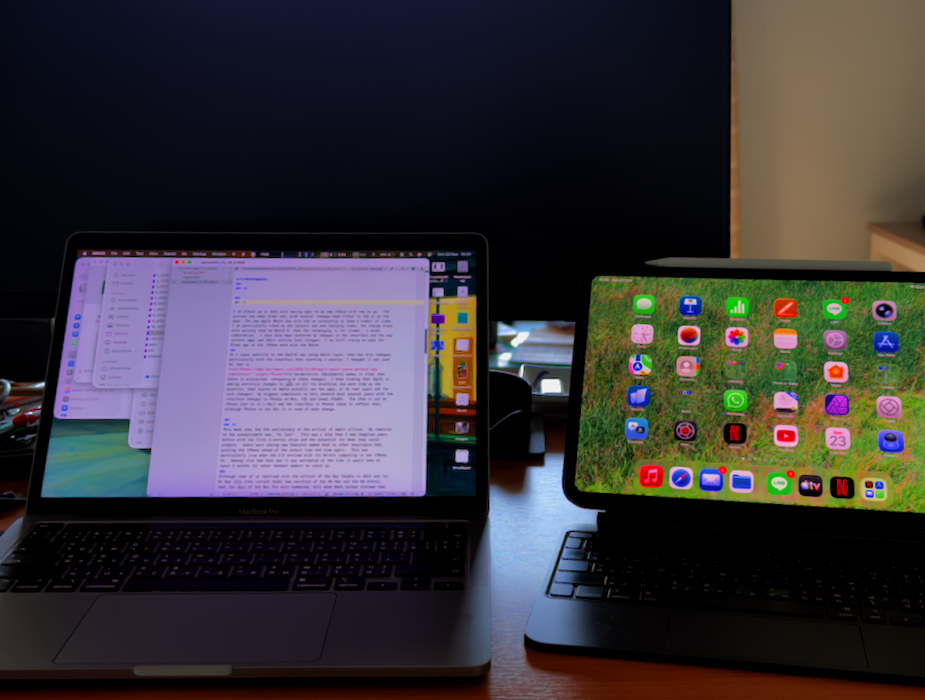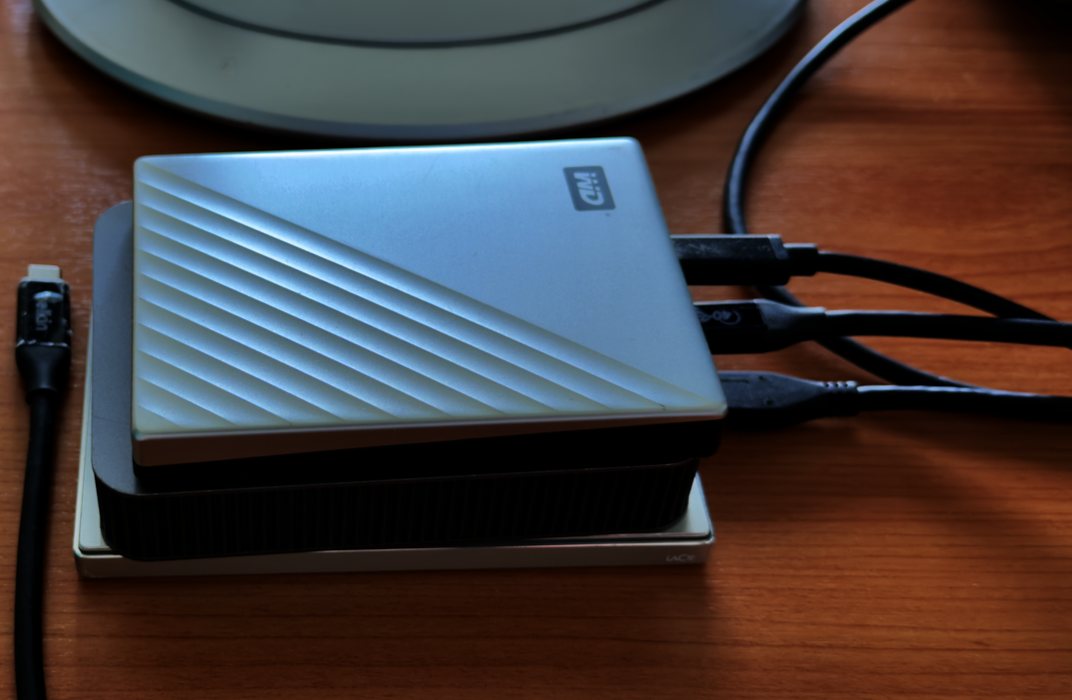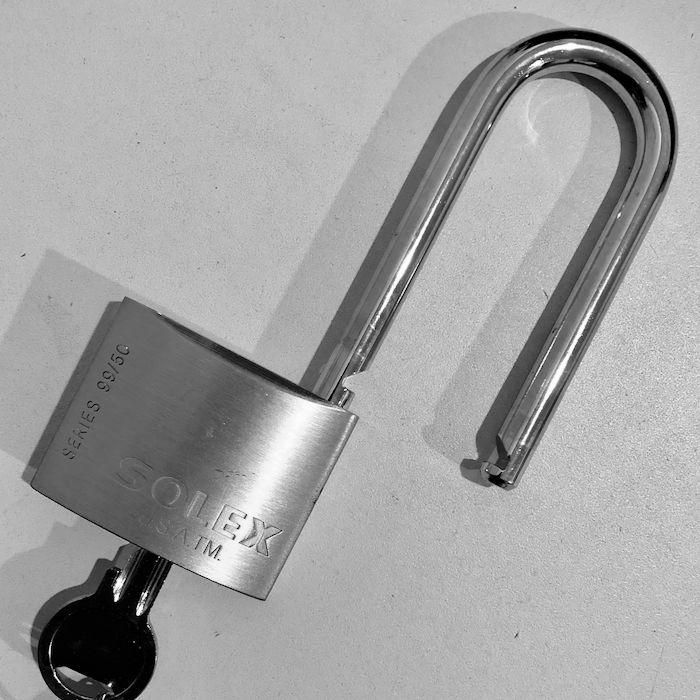
eXtensions - Sunday 23 November 2025
By Graham K. Rogers

I am finally moving totally (almost) to my new Watch and iPhone - a drawn out process this time. 5 years of Apple silicon, but will this see the end of the Mac Pro. Technology has superseded its design intentions. External disks and fast cables are the answer to supercomputing (and efficiency at home). Samsung safety for smartphone theft victims. Beware the messenger when security is in question. WiFi hints from 2 expert sources.
I am almost up to date with moving to my new iPhone with one recalcitrant app to go. The process has been drawn out, with several changes made either to iOS or to the apps. The new Apple Watch has also had me scratching my head a number of times. I am particularly irked by the battery use and charging times. The charge drops more quickly than my Watch 9, then the recharging is far slower - a great combination. I have also been bothered by changes to the interface and the way certain apps and their actions have changed. I am still trying to make the Sleep app on the iPhone work with the Watch.

I update exercise data to the Health app using Watch input, but that has also changed, particularly with the interface when starting a session. I thought it was just me, but Tim Hardwick (MacRumors) makes it clear that there is widespread annoyance at these changes. I keep finding that Apple is making arbitrary changes to apps on all its platforms and each time I ask the question, does anyone at Apple actually use the apps, or do real users ask for such changes? My biggest complaints about this stretch back several years with the interface changes to Photos on Mac, iOS and (now) iPadOS. The iPad is not an iPhone (nor is it a Mac) and the interface in Photos needs to reflect that, although Photos on the Mac is in need of much change.

This week sees the 5th anniversary of the arrival of Apple silicon. My reaction to the announcement was, "At last". This was a step that I had imagined years before with the first A-series chips and the potential for what they could produce. Users were seeing new features added that no other developers had, putting the iPhone ahead of the others time and time again. This was particularly true when the A-5 arrived with its 64-bit computing in the iPhone 4S. Nobody else had that and it was estimated at the time it would take at least 6 months for other handset makers to catch up. I realized then that if Apple applied this same approach to the Mac, they would be able to incorporate features that were available to Mac users only. Of course, they were years ahead of me.
Although some of us realized with the arrival of the Mac Studio in 2022 and its M1 Max chip (the current model has versions of the M4 Max and the M3 Ultra), that the days of the Mac Pro were numbered, this week Mark Gurman claimed that the MacPro was dead (or being prepared for it). Most of the tech press followed up with articles repeating this idea. If Mark Gurman puts something out, it must be true.
 This has probably been discussed in the labs and offices at Cupertino several times in the last 5 years (or more). The Mac Studio can be revised by Apple fairly quickly compared with the Mac Pro which was attractive to some purchasers because the inside slots could be used for updating specifications (RAM, disk, SSD, optical disk drives).
This has probably been discussed in the labs and offices at Cupertino several times in the last 5 years (or more). The Mac Studio can be revised by Apple fairly quickly compared with the Mac Pro which was attractive to some purchasers because the inside slots could be used for updating specifications (RAM, disk, SSD, optical disk drives).
The modern mother-board (or its equivalent) comes on one chip: SoC or System on a Chip. The specifications are fixed at the time of manufacture. In a few cases, Apple allows for updates to memory; and there is a suggestion by some that the SSD can be upgraded in the M4 Mac mini Michael Burkhardt (9to5Mac). In his article that praises the M4 Mac mini, he mentioned this: ". . . it has removable SSDs. This allows you to upgrade your storage. . . ." I was intrigued by this and had a look online. There are videos that show how this might be possible, but the consensus is that this could be risky and would certainly void any warranty.
The easiest thing is what I do: external disks. There is a way to install macOS on such a disk, but it is not as easy as with OS X. I used to have a rescue disk that would boot on any Mac. Security makes that less easy, but Howard Oakley has some advice on this (the whole site is a valuable resource). We have used external disks for several years. Indeed, when I first used a PC (Zenith) in 1985 while teaching a writing course at Illinois State University, each computer booted from one 5.25" floppy disk while data was saved on a second one. With software also run from a floppy disk, there was the occasional disk-swapping, and students often forgot to save data. It was not until I returned to the UK that I experienced my first "Winchester disk" (the hard drive); and I learned more about how to use computers in a part time job at a major accountant's practice in the City of London. Then I came to Thailand.
The Mac Pro has had a respectable history (along with the Xserve devices). I had a G4 Power Mac in my office and that had multiple slots allowing expansion. I later had the aluminum G5 version on test. It showed a clean design that later evolved into what became the Mac Pro. That had mainly Intel Xeon chips, with the current model sporting the M2 Ultra. Between the G5 and the cheesegrater Mac Pro there was also a strange version, that was nicknamed the "Trashcan". Its main problem was that it was almost impossible to upgrade. What I saw with this device, however, was that the expandability was not internal, but external. This means that the storage can be on portable disks: plug and play instead of opening up the insides and configuring settings.

That upgrading problem (for a different reason) is what we now see with the Mac Pro, compared with the Mac Studio. I think that the Mac Pro could be dropped, despite the howls of protest that will come (particularly) from the tech press and from many who will never actually own such a device. For Apple the Mac Pro is iconic rather than economic. For their time the Power Mac and Mac Pro devices were the top Macs available. Technology, particularly with the arrival of Apple silicon has moved on and, as good as it looks, the Mac Pro has been superseded by the Mac Studio. Those who buy such devices for major projects such as movies, factor in the purchase cost to the project budget, rarely upgrade while the project is running, and at the end of the project dispose of the computer for a relatively low price.
In addition, Apple is to add a new feature in the next release of macOS (26.2) which allows Macs with Thunderbolt 5 to be linked together to create am AI Supercomputer Devindra Hardawar (Engadget), or at least a somewhat more powerful system. He notes that such clusters have been possible before, but they were limited by passthrough speeds of Thunderbolt 4 (and less). The interesting part is that this will work with M4 computers too: it is not the chip speed, but the T5 cable that is the magic sauce. Ben Lovejoy also comments on this new ability, noting that regarding the comments above on the Mac Pro, "with the radical new architecture of Apple Silicon, the writing was already on the wall".
I commented a few weeks ago on the theft of iPhones in London, and that after one user tracked down the device in an installation near Heathrow Airport, the police made arrests and recovered thousands of phones. A few days ago, I came across an item by Jim Waterson et al in London Centric. The authors recount a story of a user (Sam) who was robbed of his smartphone and other items in south London. As the assailants left, they threw his phone down: "Don't want no Samsung". Leaving aside my own bias against Android phones in general, and Samsung in particular, this is not an isolated case. The London Centric writers recount other cases, and an expert cited in the content, who commented, "Apple devices have a higher secondhand market value and it makes more economic sense to pursue these more sought-after phones. . . ." Several other online sources have repeated the original tale since. I guess you could hold a Samsung in your hand and make a call using Air Pods and the iPhone in your pocket.
[Just to confirm, Robbery is theft + some type of assault; burglary is theft from a building - lots of online sources get this wrong.]
While we are on security, Andrew Orr (AppleInsider) has a warning that all of us should take note of when unusual activity and apparently-genuine messages from Apple offering assistance are received.
 He outlines an attack on a user that appeared to start fairly normally after "a burst of two factor notifications across his iPhone, iPad, and Mac." It appeared to be an intrusion. Orr then goes through the follow up messaging, with call, pop-ups and messaging that all looked and felt as if Apple was on the case. The supposed Apple advisor guided the victim through resetting the password, followed by more authentic-looking messages. The victim then saw an unexpected login on a Mac that was not his, but this created some suspicion and the victim reset his password.
He outlines an attack on a user that appeared to start fairly normally after "a burst of two factor notifications across his iPhone, iPad, and Mac." It appeared to be an intrusion. Orr then goes through the follow up messaging, with call, pop-ups and messaging that all looked and felt as if Apple was on the case. The supposed Apple advisor guided the victim through resetting the password, followed by more authentic-looking messages. The victim then saw an unexpected login on a Mac that was not his, but this created some suspicion and the victim reset his password.
As part of the tactical approach, Orr suggests that, "The attack worked because it relied on Apple's real behavior at nearly every step. The alerts came from Apple's servers and the support email came from Apple's domain." He adds, "Apple's support system was designed to help users recover accounts, not verify the identity of callers" and this was successful because of timing and presentation.
Orr offers other advice in the concluding remarks, but I guess the lesson is, trust no one.
Most devices these days are set up for working with WiFi. Sometimes it goes wrong. At work I try to run my devices using a personal hotspot. The Mac mini in my office connects to the university network. Sometimes the iPhone link is quicker; but if I have to connect my iPad Pro or the MacBook Pro to the office network, I always restart the devices when I come home. My accommodation is not large and I connect to an Apply Airport router (I wish Apple would use that new N chip to produce an updated version of this) downstream of the optic cable router from the local internet provider. The second WiFi router connects using an Ethernet cable, and I have a USB-C to Ethernet connector set up already for visitors or if I should ever want a sure connection (big downloads, security).
Sometimes we have problems with the WiFi, wherever we are. Glenn Fleishman (6 Colors) has useful advice on what to look for if the device keeps linking to the wrong WiFi. Coincidentally, the following day, Jamie Cuevas (OS X Daily) also had a look at WiFi troubleshooting with iOS 26.1 - both useful as starting points.
Graham K. Rogers teaches at the Faculty of Engineering, Mahidol University in Thailand. He wrote in the Bangkok Post, Database supplement on IT subjects. For the last seven years of Database he wrote a column on Apple and Macs. After 3 years writing a column in the Life supplement, he is now no longer associated with the Bangkok Post. He can be followed on X (@extensions_th). The RSS feed for the articles is http://www.extensions.in.th/ext_link.xml - copy and paste into your feed reader. No AI was used in writing this item.

For further information, e-mail to
Back to
eXtensions
Back to
Home Page